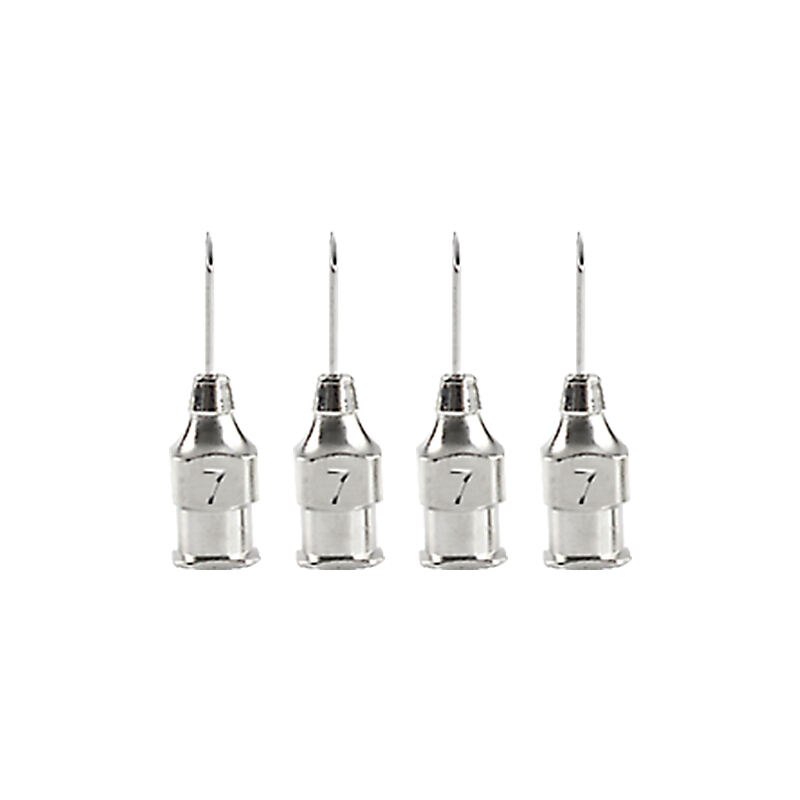The Critical Role of Veterinary Tools in Animal Health
Enhancing Diagnostic Accuracy
Diagnostic tools used in veterinary medicine, including high resolution imaging devices and modern blood test kits, are essential for figuring out what's wrong with our animal friends. The newest tech stuff like ultrasounds and endoscopes really helps vets get things right when treating pets, which leads to much better results overall. These recent improvements have changed how vet clinics work because they give instant information about an animal's condition, and this has made a big difference in pet healthcare. Take X-rays for example, some problems just don't show up clearly with older techniques, but the new equipment spots them easily so treatment can start sooner rather than later.
Improving Treatment Outcomes
Choosing good quality vet tools makes a real difference in how well treatments work and how fast animals recover. Studies show that when vets use modern equipment during procedures, there are fewer mistakes made during surgery and pets tend to bounce back quicker from their treatments. This leads to happier animals overall. Take laser therapy for instance or those tiny incision tools that let vets operate without making big cuts these innovations help cut down on pain after procedures while making things more comfortable for our furry friends. That means less stress for both pets and their people at home. Investing properly in decent veterinary gear isn't just about keeping up with trends it's actually essential if we want to give animals the best possible care and make sure they get better successfully.
Key Features of High-Quality Veterinary Instruments
Durability and Material Composition
Good quality vet tools stand out because they last longer and are built from strong materials. Most often, stainless steel makes up these instruments which resist rust really well, so they hold up in all sorts of messy vet clinic situations. The fact that they don't break down after constant handling matters a lot since clinics go through tons of wear and tear daily. Some recent studies have shown that when clinics invest in better materials for their tools, those tools tend to last much longer while actually performing better during procedures too. Over time, this investment pays off financially because clinics spend less money replacing broken equipment and get consistent results when treating animals.
Ergonomic Design for Precision
The way veterinary instruments are shaped matters a lot when it comes to quality, because good ergonomics really helps vets get precise results during operations. Tools with comfortable grips and weights that balance well in the hand cut down on tiredness, so vet pros can handle those long surgeries without their hands shaking from strain. Research indicates that when tools fit properly in the hand, they do more than just make work safer and faster they actually give practitioners better control over what they're doing. Think about how critical this becomes in animal medicine, where even small mistakes might mean big differences in recovery times or success rates. At the end of the day, investing in ergonomically sound equipment means happier professionals who aren't fighting against awkward tool designs while trying to save lives.
Impact on Surgical Procedures and Patient Safety
Reducing Risk of Complications
The right tools make all the difference when it comes to avoiding problems during animal surgeries. Better cutting and stitching methods help prevent things like too much blood loss or infections after operations. Most vets will tell anyone who asks that newer surgical equipment definitely cuts down on complications after surgery. When working with good quality instruments, vet surgeons get cleaner cuts and tighter stitches, something that means animals recover faster and stay safer overall. Many clinics have seen real improvements since upgrading their toolkits, though exact numbers vary depending on what kind of procedures they're doing most often.
Sterilization and Infection Control
Sterilizing veterinary instruments properly matters a lot in clinics everywhere. When tools get cleaned thoroughly after each use, it stops infections from spreading and keeps animals healthy during their visits. Tools that are easier to clean cut down on germs passing from one pet to another, something every vet wants to avoid. Studies from organizations like AVMA show that sticking to top-notch sterilization protocols actually protects both pets and staff members working around them daily. Most vets know this already but still struggle with time constraints sometimes. Good infection control isn't just about following rules though; it creates an overall safer workplace where everyone feels comfortable doing their jobs without worrying about catching something nasty from contaminated equipment.

Cost-Benefit Analysis of Investing in Advanced Tools
Long-Term Savings Through Reliability
When clinics invest in good quality vet tools, they actually save money over time because these tools last longer without breaking down all the time. Many animal hospitals have seen their bottom line improve after switching to better instruments since they spend less on fixing things or buying new ones so often. Research shows practices that stick with solid equipment run into problems far less frequently than those cutting corners. This means less time wasted waiting for repairs and more time seeing patients as scheduled. Plus, when tools work properly from day one, there are simply fewer mistakes made during procedures. One clinic owner told me recently how her error rate dropped by about 30% after upgrading her surgical kit, which saved thousands in correcting those mistakes plus boosted staff morale knowing they had dependable gear at their disposal.
Enhancing Clinic Reputation and Trust
Veterinary clinics that invest in better equipment often see improvements in how clients view them and build stronger trust over time. Pet owners generally prefer going to places where they notice modern tools and techniques being used regularly. This preference leads to more word of mouth recommendations and good reviews online. When people walk into a clinic and see shiny new machines or hear about recent upgrades, they tend to feel more confident about leaving their pets there. The market is pretty crowded these days, so standing out matters a lot. A solid reputation built on actual quality service brings in new customers while keeping existing ones coming back year after year, which ultimately helps the practice grow steadily.
Training and Proper Use of Veterinary Equipment
Importance of Ongoing Education
Veterinarians and their staff need regular training and learning opportunities if they want to make good use of all those new tools coming out in veterinary medicine. The field is changing so quickly with new gadgets and techniques appearing almost monthly. Studies show that when vets keep learning through continuing education, they get better at handling equipment and actually see improvements in patient results too. Take digital radiography systems for example most practices report better diagnosis rates after staff attend manufacturer training sessions or complete certification programs on proper imaging techniques. Sticking with professional development isn't just about keeping skills sharp it really makes a difference in how well animals respond to treatment. Practices that invest time in education tend to have happier clients and healthier pets walking through their doors week after week.
Best Practices for Tool Maintenance
Keeping up with regular maintenance and taking good care of veterinary instruments really matters if we want them to last longer and work reliably. When clinics stick to proper cleaning schedules and store tools correctly, these simple steps make a big difference in how long the equipment stays functional. Plus, everyone benefits from safer conditions for both animals and staff members. Some research shows that veterinary practices which follow set maintenance procedures tend to experience far fewer breakdowns and service interruptions compared to those who don't bother much with routine checks. For most clinic owners, sticking to a consistent maintenance schedule protects their financial investment while showing clients they take animal health seriously through continuous quality care delivery.
FAQs
Why are advanced veterinary tools important for animal health?
Advanced veterinary tools are crucial because they enhance diagnostic accuracy, improve treatment outcomes, and ensure safer surgical procedures. They enable veterinarians to create effective treatment plans through precise diagnoses.
What are the key features to look for in high-quality veterinary instruments?
Key features include durability, robust material composition, and ergonomic design. These features ensure longevity, precision, and comfortable use during procedures.
How do advanced tools contribute to patient safety during surgeries?
Advanced tools reduce the risk of surgical complications by ensuring precise cutting and suturing, which leads to quicker healing times and minimized infection risks.
What are the benefits of continuous training for veterinarians?
Continuous training helps veterinarians stay updated with the latest tools, leading to improved proficiency and enhanced clinical outcomes. It ensures that professionals can effectively use new technologies to provide high-quality care.

